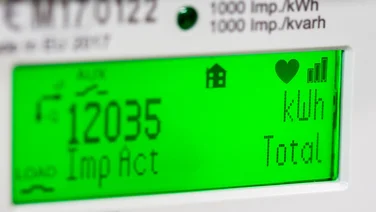- Concept AMG GT XX sets a total of 25 performance records, averaging over 5,300km (3,293 mi) per day
- It has extremely short charging times with an average charging power of around 850kW
- Drivers maintained a constant speed of 300km/h (186mph)

Mercedes-AMG has broken the world record for the furthest distance ever travelled by an electric vehicle after its Concept AMG GT XX electric vehicle (EV) sprinted 5,479km (3,404 miles) in 24 hours, breaking the previous record by 1,518km (943 miles).
It was one of 25 long-distance records set by the car manufacturer, with the most extreme test being to drive 40,075km, (24,901 miles), the equivalent of the Earth’s circumference – which Mercedes described as driving ‘around the world in eight days’ – in a bid to prove the EV’s electric drivetrain.
The EV easily beat its target, covering the 40,075km distance in seven days, 13 hours, 24 minutes and seven seconds.
Markus Schäfer, Mercedes-Benz Group AG’s chief technology officer, said the EV was tasked with covering as long of a distance as possible in the shortest possible time.
He said that the drivers maintained a “constant speed of 300km/h (186mph), stopping only to recharge to power levels averaging around 850kW, which he described as “far beyond what today’s charging capabilities of this product-ready drivetrain”.
“This once again underscores the future-proof capabilities of this production-ready drivetrain,” Schäfer said.
“After each charging stop, the vehicle accelerated back to 300km/h (186mph) – over and over, day and night, for eight days.”
The vehicle’s pace was deliberately set by the engineers based on extensive simulations, and 300km/h offers the optimal balance between track speed and charging stops, delivering the fastest overall time.
The experiment was carried out in Nardo, Italy, and saw experienced race drivers complete two-hour shifts in endless round-the-clock races. On average, Schäfer said the Concept AMG GT XX drove more than 5,300kn (3,293 miles) per day.
Conditions varied, with ambient temperatures rising up to 35 degrees in the shade, climbing high under direct sunlight on the exposed track. Schäfer said the experiment was not only a “feat of technology, but also of teamwork”.
“Mercedes-AMG and Formula 1 stand for innovation, intense competition, and pushing the boundaries of what is technically possible,” Schäfer explained.
“Our company’s powertrains achieved groundbreaking successes in the very first road races in automotive history more than 120 years ago and have set benchmarks for decades.”
Schäfer claimed that the company is entering “a new dimension of performance – this time with fully electric drive” and will try to break more EV records.
How did Mercedes break these long-distance records?

The Concept AMG GT XX has three innovative axial flux motors and a high-performance battery, which was developed from scratch to enable continuous electric power and ultra-fast charging. This allowed the EV to be pushed to its limits.
The company said that even under extreme conditions, the batteries remained within an optimum temperature range, helping performance and enabling its fast charging feature.
Axial flux motors are more compact, lighter and more powerful than conventional EVs, with its power density around three times higher.
The EV generates a peak output of more than 1,000kW thanks to its three motors integrated into high-performance electric drive units on the front and rear axles. The rear axle has two oil-cooled axial flux motors, combined with transmissions and one inverter each in a single housing.
The front acts as a booster motor and is only activated when needed to provide additional power or traction.
The company said that axial flux motors offer higher advantages over conventional motors. These are:
- Significantly more powerful
- Lighter and more compact
- Power density is roughly three times higher
- Requires only one third of the installation space
- Deliver higher continuous output and greater torque
The foundation of the motors was originally developed by British electric motor specialist YASA, but both Mercedes-Banz AG and YASA worked together to elevate the concept.
The high battery is a new development from Affalterbach and was inspired by Formula 1. It enables a high power output that can be called up frequently and repeatedly to contribute to the vehicle’s overall performance.







